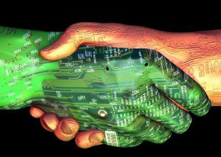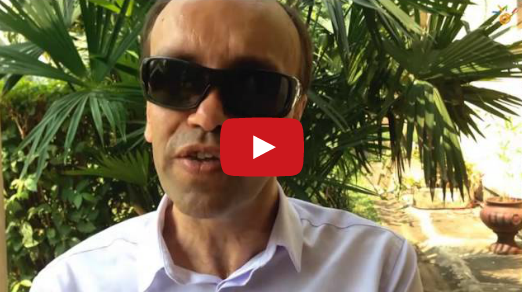New ways of thinking, communicating and consuming are gradually established, with new generations and interculturalities in power, rising economies, international regulations and growing environmental concerns. These changes and the new expectations they create seem to happen too fast in relation to the ability of organizations to absorb them. Hence, they have no other options than to take perspective and revisit the processes that allow them to increase their ability to adapt.
These changes and the new expectations they create seem to happen too fast in relation to the ability of organizations to absorb them. Hence, they have no other options to take perspective and revisit the processes that allow them to increase their ability to adapt, by changing their own paradigms, and opening new creative opportunities. Therefore, how can companies start integrating effectively these changes into their vision and strategy, by creating or providing positive consequences in relation to their organizational culture and performance?
We discuss here how to build-up an adaptive culture that emphasizes new ways of stakeholder interconnection, and engagement and collaboration between managers and front-line workers.
In times of change, those who are open to learning become masters of the future, while those who think they know everything will be well equipped for a world that no longer exists. Eric Hoffer, sociologist.
Moving forward towards a new age
We are indeed living in times of accelerated progress and major changes that will show us that a “reaction” is to occur, and the need to emerge at the enterprise level, to incorporate these changes and adapt differently to this changing world that moves very fast. Our relationship to technology under increasing pressure, especially Internet-related phenomena, challenges today’s business, economics, behaviour and aspirations. We are evolving, we are creating new levels of awareness, skills, and because of that we develop tools to fit our new challenges. These require us to change our own paradigms and those who make the growth of our business; we strive to make them sustainable.
As we said before, how does the company of “tomorrow” can effectively incorporate these changes into its vision and strategy while providing positive consequences for its culture and organizational performance? In a few decades, we went from the age of “doing,” the short-term, our habits and our technologies, to the age of “representations”, of the vision or “projection” and the corresponding strategy. However, these rapid changes require us to move quickly to another age, that of the humans and of what makes “sense” and “connectivity”.
This is the challenge of our lives and human organizations and we will try to shed light on this issue.
Worldwide accelerated changes
 While population growth and urbanization is accelerating (1 additional billion people between 2000 and 2012), a new economic and geopolitical order moves in, especially seen in the economic rise of Asia, but also in the development of an international regulation, such as banking and fiscal transparency between states. At the same time, we note the emergence of several financial crises and health problems (mad cow disease, chicken dioxins…), environmental concerns (destruction of forests, pesticides, carbon …), and what to say of the relationship to the space where mobility is replacing rooting! These changes lead to a new model of consumption that is gradually taking place.
While population growth and urbanization is accelerating (1 additional billion people between 2000 and 2012), a new economic and geopolitical order moves in, especially seen in the economic rise of Asia, but also in the development of an international regulation, such as banking and fiscal transparency between states. At the same time, we note the emergence of several financial crises and health problems (mad cow disease, chicken dioxins…), environmental concerns (destruction of forests, pesticides, carbon …), and what to say of the relationship to the space where mobility is replacing rooting! These changes lead to a new model of consumption that is gradually taking place.
The emergence of alternative information, monitoring and consumer choices give a new power to consumers on supply and sales channels online, exchange or “barter” for access to goods without having to go by companies.
The so-called “collaborative” consumption promotes access to services rather than property, to human relationships rather than the market and the existing resources (car, co-hosting) rather than production. The buyers are not willing to loose their comfort but they are ready to buy differently, from coffee to certified fair trade smartphones, or access to information differently by the encyclopaedic sharing ‘open source’.
The relationship to time also changes abruptly in the race for profitability (stress, “financialisation” of the economy and crises), the perpetual present and less time to capitalize on our story, while life goes on.
The individual himself is changing very fast. The generations of the1980s and the 1990s (referred to as “Y” the why “), soon in power, are especially looking for a new “sense” in their life choices. While in previous generations beliefs and behaviours are strongly linked to their local culture, those of Generation Y are quite similar worldwide: Live the moment, have several projects at the same time, moving from text thought to image thought… and binary thinking that is going down, the virtual world that replaces the real one, the communication of all with all, and a diversity of means of communication that explodes.
What is at stake, and internet has overthrown, are the human relationships and the complexity of relational phenomena. It is clear that beyond these exchanges, there are shared situations, shared affinities, shared values, shared challenges that are established, and new communities are living with them. This is this new world in which the company develops.
The incredible is coming towards us very soon!!
Research and current developments show that the incredible is coming towards us very soon! Vehicles guided by sensors will pick up us by themselves. Calculating a very different way, computers will hundredfold their computing capacity. Artificial intelligence will be everywhere and our computers will be able to infer and develop feelings replicas of the brain. A simple smile or a gesture of annoyance or a simple thought interpreted by sensors will trigger appropriate technological responses. We may add a friend on to our social networks only by shaking his hand. Devices change shape and obey our brains. Personal robotics and the tablet that is as flexible as paper. We can read our mails with contact lenses. We can translate text into any language by talking with our smartphone. Or even the ability to make objects at home using the web and printer layer by layer.
From an augmented reality with contextual information on the screen to increased prosthetic body riddled with sensors, we will delegate much of our cognitive tasks to technology (memory, repetitive tasks, sense of direction, organisation to focus on creating. Creativity is already accelerating: 2 million patents filed in 2012, only one Chinese manufacturer of smartphones introduced to the market six thousands phones!
How to integrate these changes in our business?
Creativity comes first for the human beings, who are in themselves their own instrument of intervention. At the individual level, all begins with knowing and recognizing ourselves in this highly changing environment; defining ourselves, respecting ourselves and assuming what we are, what we control and about what we must speak for ourselves, for others; our openness to difference and to paradigm shifts. What prevents us from stepping out of the box?
And find our balance between personal and professional life by respecting our physical, intellectual, and relational and power “spaces”; meeting our security needs of meaning, recognition and autonomy. By living in our present moment we prepare our better future!
At the organisational level, what are the main points to consider here in the company of “tomorrow”? In the light of what we have stated above, more restructuring, mergers and relocations will be expected, whereas today 70% of organizational changes do not or only partially achieve their goals, due to the low-inclusion of the human dimension and interculturalities.
We assume that the ability to adapt or the “plasticity” of a “body” puts a whole in line with the environment, allowing it to ensure its survival and “reproductive” success. We see the company’s future lying around because it will consist of a constellation of small businesses closely interrelated around values, goals, and collaborative and efficient solutions, where power relations are minimal. Creativity and adaptive culture will be key growth factors. People will be interconnected and credible, open to the intelligence of collective actions, internally and externally, due to a greater “porosity” of the company for a significant expansion of exchange.
So if we assume that each individual is at the center of knowledge and values creation, we understand the following equation: lead or guide instead of administer staff is foremost meeting the specific needs of the individual as age, sex, phases of his life, i maximizing productivity, creativity, work performance of this individual. Space, time and roles will have to change completely in line with the new needs of the “Generation Y” and the following ones.
The challenge is to attract and retain not only our customers, but also the skilled and motivated staff as well. Future employees will choose companies that create both wealth and well-being, work environment and the quality of its exchanges. Considering the uniqueness of each individual, we can pretend that by identifying specific individual potential and values can strategically place the individual in the company and thus offering him it an effective and operational resources. There are also some actions not too difficult to implement, such as:
- helping individuals and teams to develop a better self knowledge and to better understand the environment with which they inter-react, while being alert to their exposure to overwork or “burnout”
- Identify internal brakes, manage and improve the strategy of communication, training and development tools, new styles of leadership with “coach” attitude.
- Develop communities of practice and learning, by giving time to make clear thoughts emerge as well as perspective.
- Revisiting the work environment to reduce stress, improve the ability to generate new ideas, and give the best of ourselves.
- Develop social and environmental projects, more human and more “green”, giving a sense of building a new world.
- Finally, develop the unique potential of each individual by placing him at the right time within projects and teams.
- Think about giving positive feedback to the individuals and teams (recognition of “know-how” and “know-being”, respect and support, team building).
- To allocate resources such as coaching, to develop a smooth and effective dynamics within teams … and why not help them to think outside the box! Well-being means performance…This is the intangible capital we are talking!
In other words
How to ride this wave of accelerating change? The age of ”what make sense” is the one where performance is challenged by the values, social responsibility, shared commitment. It goes with the extension of the relational field, the business community, its collective intelligence, adaptive culture, where the value lies in the values and the common good. The key skill is no longer the information processing, but the treatment of complex human situations which becomes the new horizon of business development, with the Internet in the background. Economic and human capitals are indeed increasingly interdependent and it is obvious that happy people are more effective, efficient and pleasant to work with as at home!
To what extent is your company able to integrate it all in its strategic direction? What would you change tomorrow? What do you think?



